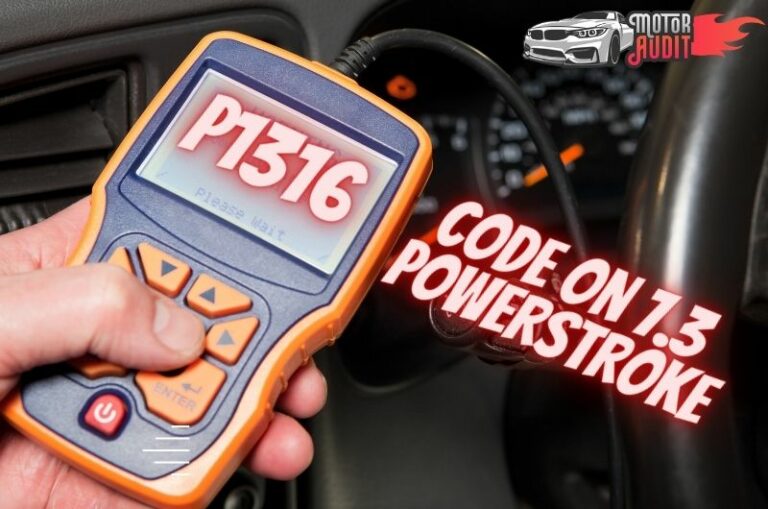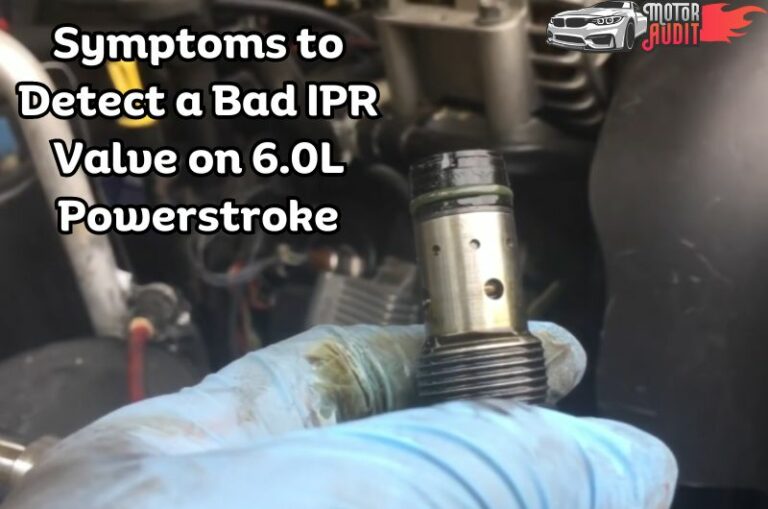4 Symptoms To Detect Low Fuel Pressure On 6.0 Powerstroke
Overtimes, low or insufficient fuel pressure on a 6.0 Powerstroke causes significant damage to the fuel pump, engine’s power, and vehicle’s overall performance.
But are you aware of how to detect low fuel pressure problems?
If not, in this very article, let’s discover and learn the most common sign & symptoms that indicate when your engine is suffering due to low fuel pressure.
What Sign You Should Look For To Detect 6.0 Powerstroke Low Fuel Pressure?The most obvious sign that your engine lacks enough fuel pressure is when you notice a significant drop in your engine performance due to rough or hard starting, spluttering, continuous stalling, and throttle lagging issues.
6.0 Powerstroke Low Fuel Pressure Symptoms:
Let’s learn more about the other common symptoms that help to identify low fuel pressure issues on the 6.0 Powerstroke. By reading these, you will also get to know about how to detect a low fuel pressure of 6.0 Powerstroke:
1. Hard Starting, Spluttering & Stalling
When your 6.0 Powerstroke engine is not actively responding to the starting command or taking too long to start even after warming up and cranking, it is very likely because of the low fuel pressure that you have.
Since low or insufficient fuel pressure fails to ignite the engine and maintain the required fuel flow as a result, the engine visibly struggles to start or splutter during starting.
Besides that, you may also encounter that your vehicle’s engine stalls during running or whenever the engine is turned at idle.
Mostly engine stalls when there is a significant drop in the fuel pressure level.
2. Misfiring, Lack Of Power & Low-Performance Issue
When you do not have the required sufficient fuel pressure in your 6.0 Powerstroke engine’s fuel system, it will affect the air and fuel mixture.
As a result, the combustion will turn weak and you will notice misfiring or bucking, especially while on acceleration or when your engine is at idle.
You may also notice that your vehicle engine is missing the minor tweaks that it needs to run smoothly.
The engine may act like it is starving for fuel or lacks enough power whenever it is under load, heavy accelerating, or navigating at highway speeds.
Since insufficient fuel pressure can cause your engine misfiring, bucking, and even significant power loss, you will also see a significant drop in your engine’s performance.
3. Lagging Or Unresponsive Throttle
If you ever notice any lagging in your vehicle especially, after you press the accelerator pedal, it can occur because of the insufficient or low fuel pressure in your fuel system.
Remember, to run your vehicle smoothly, you will need a constant stream of fuel into each engine cylinder.
But when the fuel pressure fluctuates or drops significantly, the throttle will turn unresponsive and fail to deliver that stream of fuel flow.
Throttle lagging issues may also arise because of the faulty, damaged, or weak fuel filter and pump so, to determine the actual reason you need to test the fuel pressure first.
4. Hearing Vibration & Noise Or The Check Engine Light May Occur:
When your 6.0 Powerstroke engine encounters a lack of fuel pressure and power in the fuel system, you will hear unnecessary vibrating sounds coming from the engine.
The noise may sound like the engine is firing only four cylinders or maybe driving over rumble strips.
When your engine gets affected by a fuel pressure issue, the check engine light will automatically come to life.
So, that will be the easiest way to find out when you have low or poor fuel pressure in your fuel system.
These are the most commonly encountered symptoms of a weak or failing 7.3 Powerstroke fuel pump and if you ever encounter any of them, make sure to give attention to your fuel pump first.
What Should You Do After Detecting Low Fuel Pressure On A 6.0 Powerstroke?
Whenever you encounter or notice any sign or symptom that indicates that your engine is suffering from low or insufficient fuel pressure issues, make sure to run the fuel pressure test first to confirm the problem.
To do the fuel pressure test on your 6.0 Powerstroke engine, follow these easy steps:
Removing The Air Filter Assembly & Cold Side Intercooler Tube:
The fuel pressure test port plug is located at the bottom of the fuel filter housing area of your 6.0 Powerstroke engine.
Therefore, to have clear access to the fuel pressure test port, remove the cold side intercooler tube and air filter assembly.
Installing The Schrader Valve Test Fitting:
Now, use a 6 mm Allen wrench to disconnect and remove the port plug.
Then, you can install a Schrader valve test fitting for testing the fuel pressure condition.
Note that, if your Schrader test fitting has an O-ring, you need to coat it in clean motor oil before the installation task.
Remember, if you install a Schrader valve test fitting, you can keep that fitting connected to the fuel filter housing for future troubleshooting issues and testing.
Installing The Compatible Schrader Valve Adapter:
You also need to install a Schrader valve adapter compatible with your fuel pressure gauge.
For confirming the correct adapter, you need to check your 6.0 Powerstroke engine’s user manual or contact your dealer to confirm that.
This way, the test fitting can be installed and left permanently for future diagnostics.
These adapters are easy to insert and remove just like the diagnostic tools.
However, if you are not confident enough to do this testing all by yourself, immediately contact the professional mechanic or your dealer.
Connecting The Pressure Test Fitting To The Gauge:
After the successful installation of both the Schrader Valve test fitting and adapter, connect the fuel pressure gauge to the fittings and make sure all the fittings or lines are secure.
Also, re-install the air filter and intercooler tube that you have removed earlier.
Checking The Testing Result Of The Fuel Pressure:
Now, if your fuel pressure KOEO and KOER indicate that it is maintaining more than 45 psi at idle, it means there is a high chance of a lift pump problem.
So, you need to check the connections and if required, you may need to replace the pump.
Next, you need to check fuel pressure at wide-open throttle, it will help you to solve the hard starting, running, stalling, or jerking issues on your engine.
For this testing, you will need a longer hose that can reach your fuel pressure gauge.
Remember the fuel pressure should be 45PSI or more than that when at WOT.
You can also use the blue spring fuel pressure regulator, which is especially recommended by the Ford Motor Company for 10% greater fuel pressure.
Is Replacing The 6.0 Powerstroke Fuel Pressure Regulator Kit Typically Expensive?
The cost of each type of fuel pressure varies, but mostly they are affordable enough.
The average expense of the fuel pressure regulator replacement can be around $265 up to $290.
If you get the replacement from the dealer or professional mechanic, the estimated labor cost will be between $97 and $122 (excluding the estimated parts price of $168).
However, the computer-operated regulator kit will be expensive than the regular ones and can cost approximately $150 up to $300.
How Often Should You Inspect Or Service 6.0 Powerstroke Fuel Pressure?
Typically, you should do the fuel pressure test whenever you notice any sign or hint of low fuel pressure or a significant drop in your engine power and performance.
However, each Powerstroke engine comes with user manuals to guide the users in keeping their engine active and healthy with the regular schedule maintenance.
So, you should just follow that guideline.
The Verdict
Maintaining fuel pressure in a 6.0 Power Stroke engine is as essential as other major engine components. That is why you need to have a brief idea of the symptoms that directly indicate whenever your engine encounters fuel pressure issues.
Keep all the above-discussed major symptoms in your mind to get the hint at the right time before it’s too late.
- Read Also>>6 Symptoms Of 7.3 Powerstroke PCM Failure: (Detect Now)
- Read Also>>5 Symptoms To Detect ICP Sensor Failure On 7.3 Powerstroke
- Read Also>>4 Symptoms To Detect A Weak Fuel Pump On 7.3 Powerstroke
- Read Also>>4 Symptoms To Detect A Bad IPR Valve On 6.0 Powerstroke
- Read Also>>What is P0541 Code On 7.3 Powerstroke & How To Fix?


